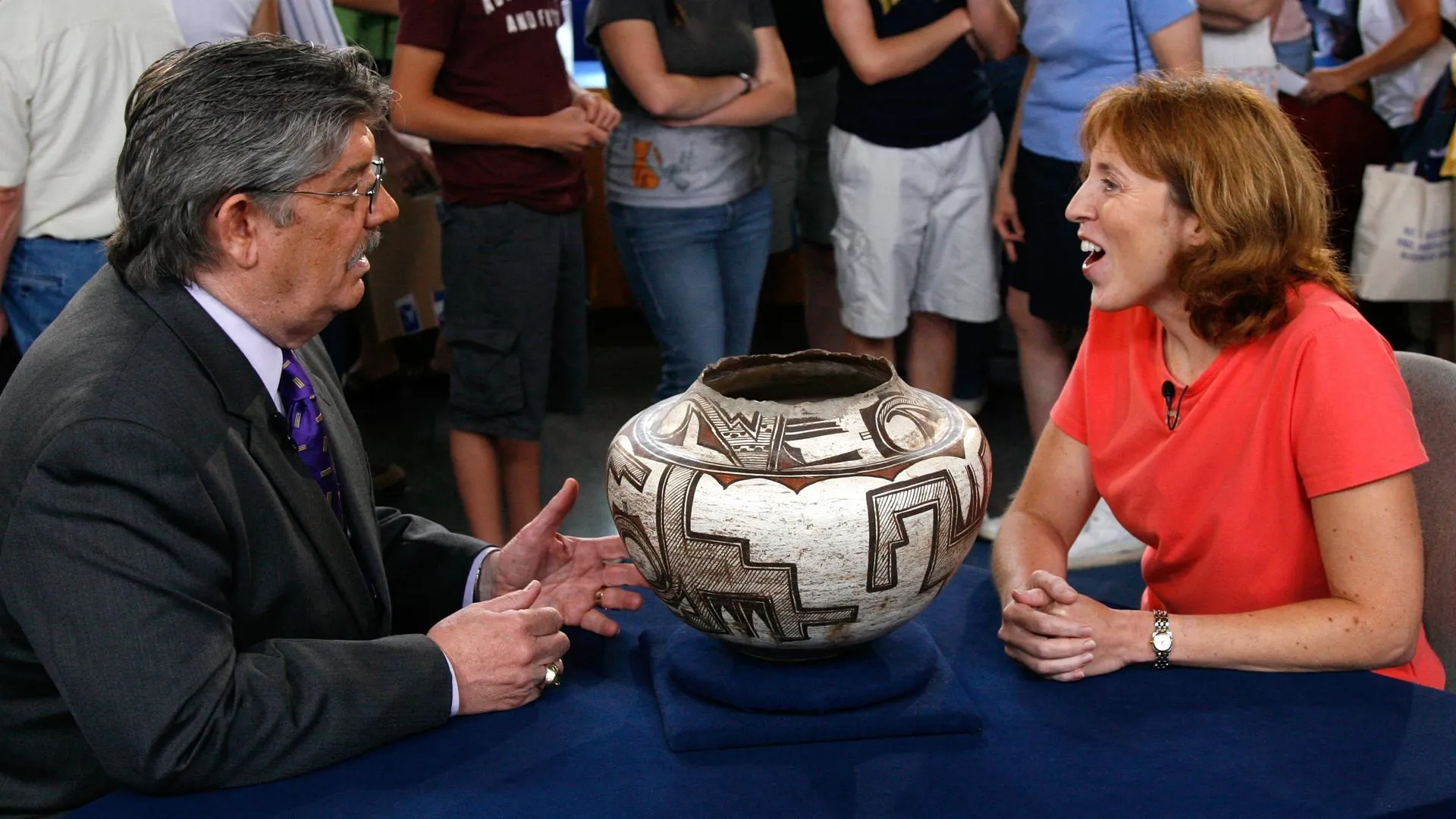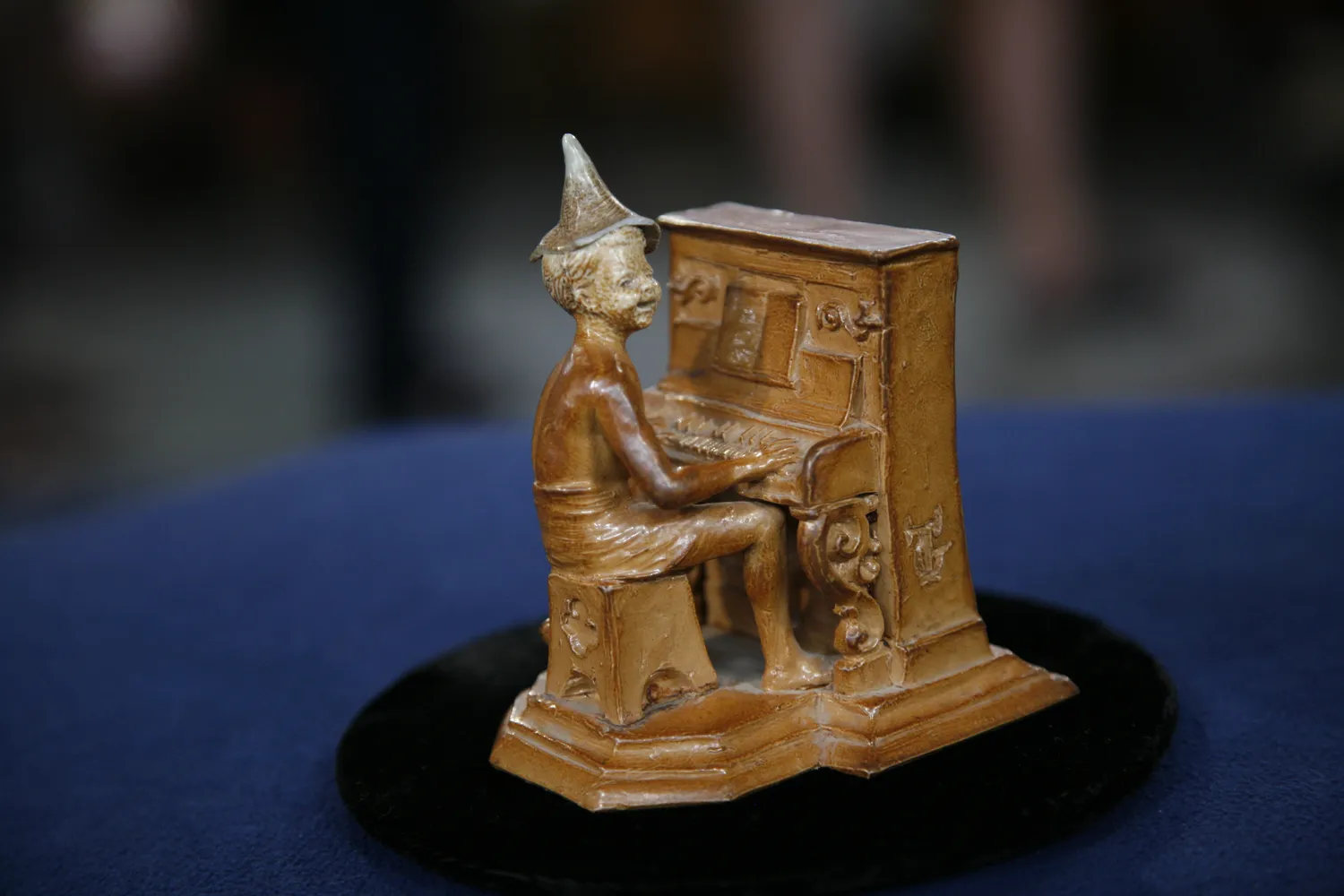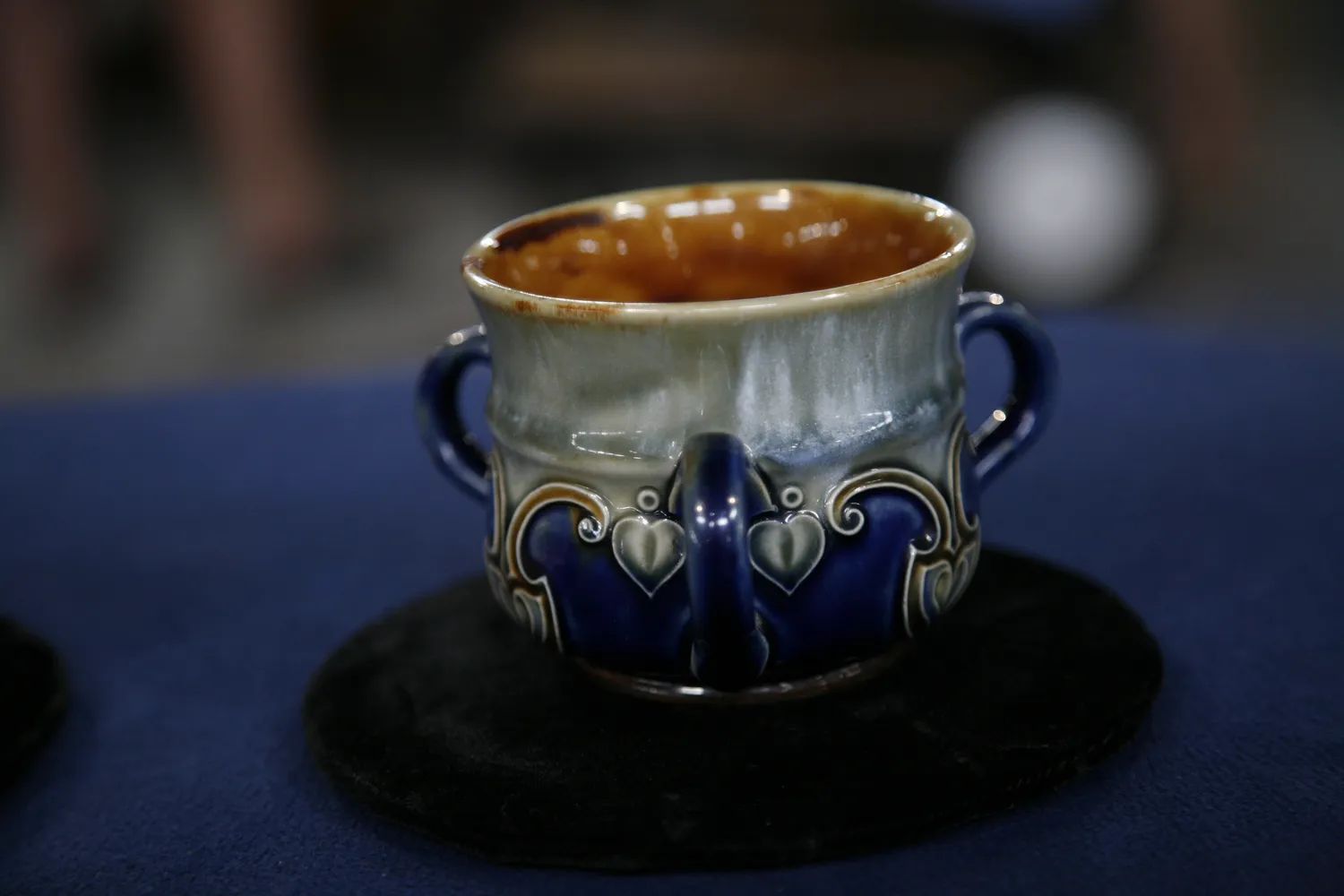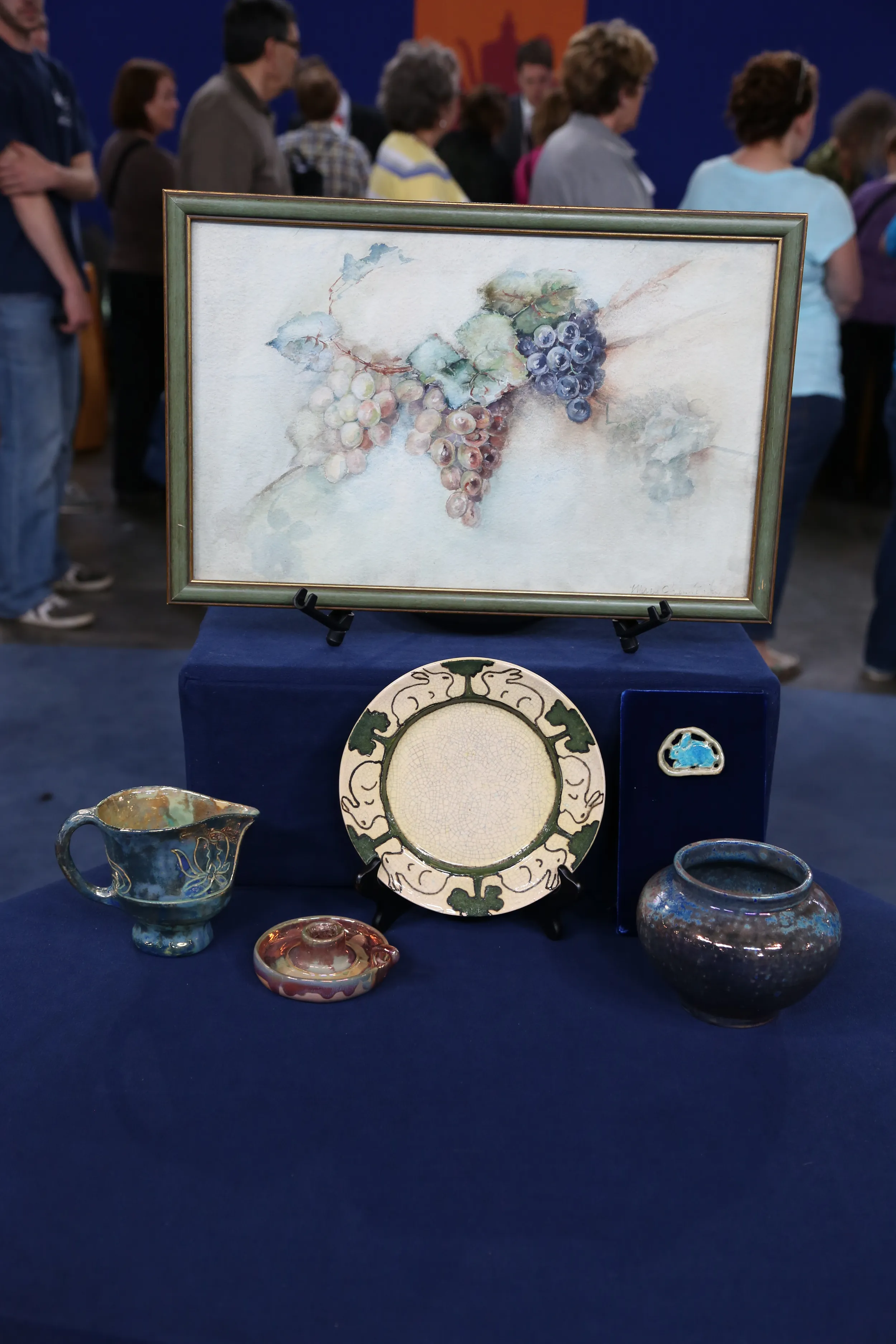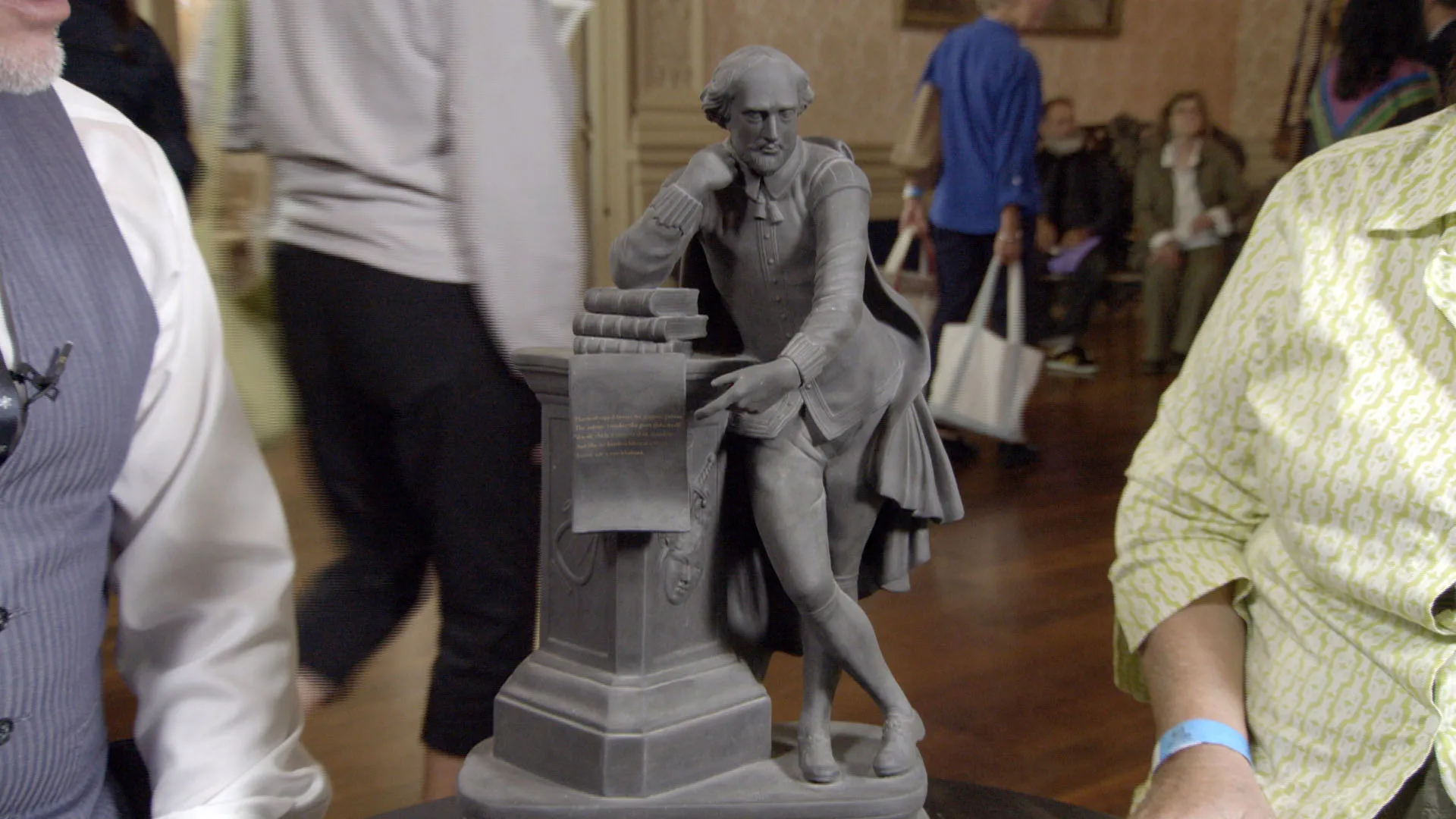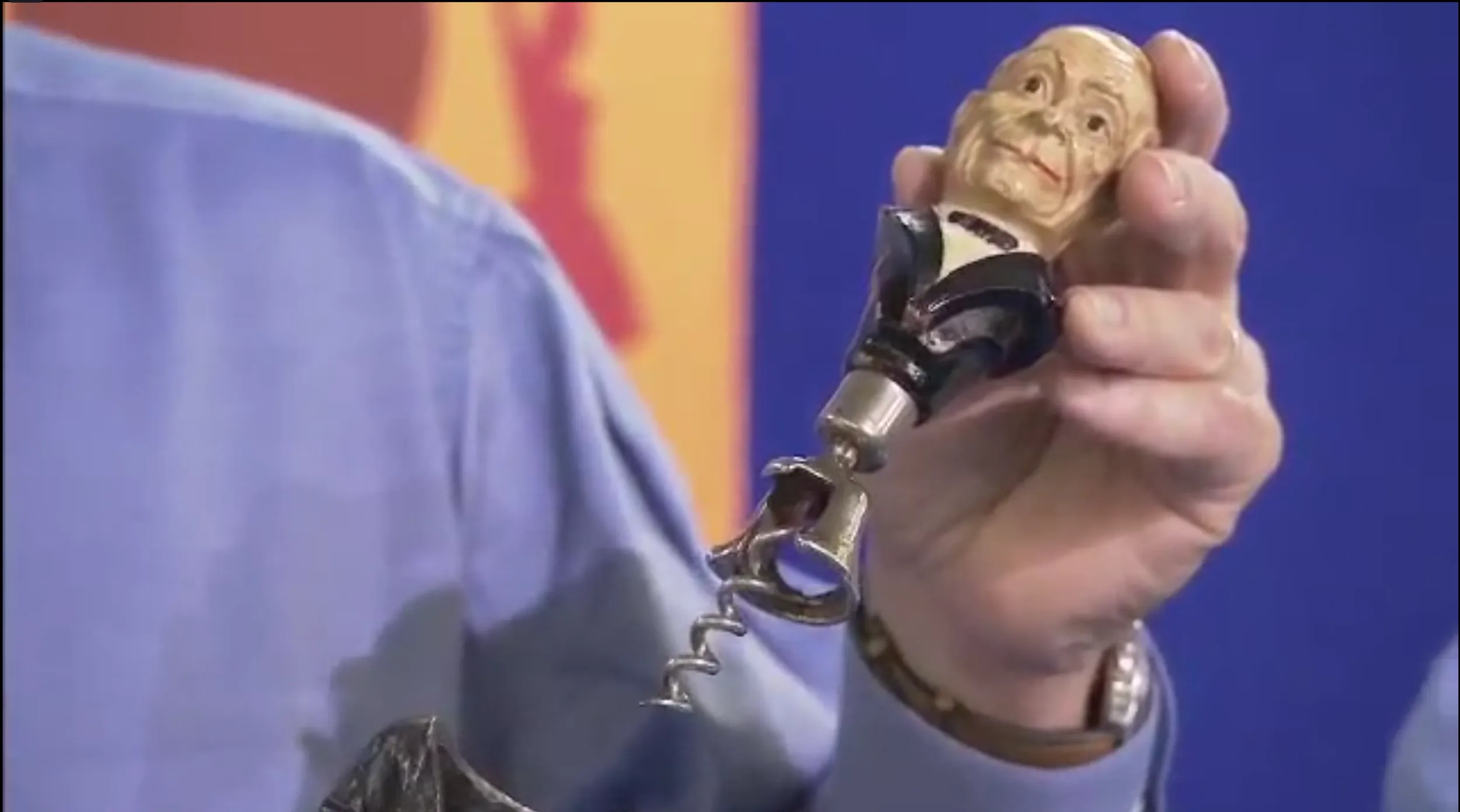GUEST: They belonged to my aunt's mother-in-law that had come over from England, and when she died, about 50 years ago, my aunt thought they were junk and didn't want them, and threw them in a trash can out back, and my mom was there, saw that, and asked her, "Well, can I have them, then?" And she said, "Sure," and Mom dug them out of the trash can and has had them all these years. Mom wanted to know what these were for years. Unfortunately, she died several years ago and never did find out, so coming to the ROADSHOW today, I'm feeling like I'm kind of fulfilling Mom's dream of finding out what these were.
APPRAISER: Getting a little closer to the truth.
GUEST: Yes. Yes.
APPRAISER: Okay. Now, looking at these, would you think that they were made by the same factory?
GUEST: Probably not.
APPRAISER: Do you know? They were. They're both made by Doulton Lambeth, which is an English factory that did this type of work in the 1860s through the 1880s, well into the 1900s, when they became Royal Doulton. Now, there were two distinct types of wares. There were the commercial wares, which were the sort of almost assembly line... You know, you glaze it, you mold it, that sort of thing. And this represents that. It has a nice glaze of blue and green. Very attractive. On the bottom here, we have the marks, Doulton Lambeth. Mold marks, painter's marks, and it would be considered your ordinary piece of Doulton Lambeth. Over here-- and this is the funny one, isn't it?
GUEST: Yeah.
APPRAISER: Little guy pounding away on a piano. The interesting thing about this is the mark that you find right here on the side of the piano, which is "G.T." in a monogram. That stands for a gentleman by the name of George Tinworth. George Tinworth is considered really pretty much the father of what became Royal Doulton figurines. He did a lot of figurines of mice and of frogs, and very, very interesting terra-cotta figural groups that are just absolutely loved by collectors worldwide. So we have a George Tinworth mark here, and a different mark on the bottom. And that's why you said it looks so different.
GUEST: Right.
APPRAISER: These are the ones that the true artists did. Rather than assembly-line material like this one, these are the ones where they're really truly sculpture. And he was probably one of the most important sculptors for a pottery in the late 19th century, so that having been said, an example like this, even with a little damage you have here to the brim of his hat, you'd want to insure it for about $2,500.
GUEST: Oh, my gosh. (laughs) That's amazing.
APPRAISER: And this one's worth maybe about $100.
GUEST: Wow. Wow.
APPRAISER: In insurance. Look at the difference between the two.
GUEST: Oh, my gosh.
APPRAISER: He's making beautiful music over there.
GUEST (laughs): That's awesome. Now, what if his hat had not been broken?
APPRAISER: You would probably want to insure it for more around $3,800 or $4,000.
GUEST: Really?
APPRAISER: So it does make a difference.
GUEST: Wow. You're making me tear up. (laughs)

